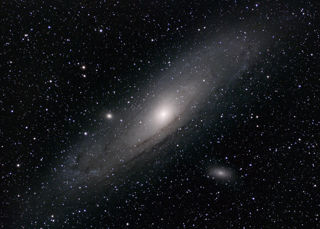
Orlan DMA EVA Spacesuit
Orlan DMA EVA Spacesuit
Orlan is one of the most successful spacesuit designs ever. First used in 1977, this Russian designed suit has been continually modified in the years that have followed - with later models used aboard the International Space Station. The National Space Centre’s Orlan spacesuit is an Orlan DMA Extravehicular Activity (EVA) Spacesuit (serial #3). It is one of three prototypes manufactured by the Russian company Zvezda, used in testing for the spacesuits worn on the Mir space station. In total only 28 Orlan DMA were ever made; 16 for training and testing, and 12 for spaceflight.Made in 1987 by Zvezda for the Soviet space programme, this spacesuit was used up until 1989 for thermal vacuum testing by cosmonauts Musa Manarov, Gennady Strekalov, Alexandre Serebrov, Alexandra Balandin, and Jean-Loup Chrétien. Between 1993 and 1996 it was used in ergonomic testing in the USA and was on display at the Lyndon B. Johnson Manned Spaceflight Visitor Center. This testing was carried out as part of the development of the EVA spacesuits to be worn on the International Space Station.
Orlan is Russian for ‘Sea Eagle’. The first Soviet EVA spacesuit was worn by Alexei Leonov in 1965. Leonov’s Berkut spacesuit (Russian for ‘Golden Eagle’) was designed for short-term use only outside of the spacecraft. Zvezda was tasked with the design of a more robust spacesuit that could cope with longer spacewalks and repeated use. Originally developed as part of the Soviet Lunar programme for exiting a Moon orbiting vehicle, Orlan went on to become the most successful EVA suit in space history. After the Soviet Lunar programme was cancelled in favour of orbiting space stations, the Orlan spacesuit design was modified to become the Orlan D – where D stands for the first letter in the abbreviation DOS ("long-term orbiting station" in Russian). Orlan DM suits followed (where M stands for ‘Modernised’), before Orlan DMA was developed in the late 1980s for use on Mir. The A in DMA stands for ‘Autonomous’, as, unlike earlier versions, the Orlan DMA was self-sufficient and did not require an umbilical cord to attach it to the spacecraft.
The Orlan DMA is a one-piece body and helmet unit - a liquid cooling garment is worn inside to help regulate temperature. The spacesuit is made from a hard-aluminium alloy upper-torso (HUT), which integrates with a helmet and backpack. Getting into the suit is done through the backpack, which also houses essential life support systems. The helmet has a spherical dual polycarbonate visor, with a layer of gold film helping to shield the eyes in extreme sunlight. The spacesuit could be adjusted to accommodate cosmonauts of various heights ranging from 164-185cm.
All images:
-
![Orlan DMA EVA Spacesuit]()
Orlan DMA EVA Spacesuit -
![Orlan DMA EVA Spacesuit - controls on the front allow pressure, oxygen and temperature to be adjusted inside the suit]()
Orlan DMA EVA Spacesuit - controls on the front allow pressure, oxygen and temperature to be adjusted inside the suit -
![Orlan DMA EVA Spacesuit - two blue safety tethers can be seen, which are used to attach the spacesuit to the outside of a spacecraft]()
Orlan DMA EVA Spacesuit - two blue safety tethers can be seen, which are used to attach the spacesuit to the outside of a spacecraft -
![Orlan DMA EVA Spacesuit - the backpack contains critical life support systems]()
Orlan DMA EVA Spacesuit - the backpack contains critical life support systems -
![Orlan DMA EVA Spacesuit - entering the suit is done through the backpack]()
Orlan DMA EVA Spacesuit - entering the suit is done through the backpack -
![Sergey Ryanzanskiy waves in his Orlan MK Spacesuit. Note the mirror on his left sleeve, used to help read the controls on the chest of his suit, which are written in reverse - Credit: NASA]()
Sergey Ryanzanskiy waves in his Orlan MK Spacesuit. Note the mirror on his left sleeve, used to help read the controls on the chest of his suit, which are written in reverse - Credit: NASA -
![Orlan Spacesuit diagram - Credit: NASA]()
Orlan Spacesuit diagram - Credit: NASA
Audio
The Orlan Spacesuit - Keeping You Alive in Space
More information
Object number
1999-16
Location
Into Space Gallery
Curator's comments
In the audio clip you can hear our curator discussing how Orlan spacesuits help keep you alive in space
Has this object been into space?
No
Dimension - Dimension, Value, Measurement unit
Depth: 50.0cm
Height: 180.0cm
Width: 80.0cm
Weight: 105kg
Material
Nylon
Fireproof Silica Fibre Cloth
Rubber
Plastic
Metal
Aluminium (Alloy)
Radzimir
Phenylon
Associated Person
Musa Manarov
Gennady Strekalov
Aleksandr Balandin
Aleksandr Serebrov
Jean-Loup Chrétien
Object Production Date
1987
Object Production Organisation
NPP Zvezda
Object Production Place
Russia
On Display Status
On display
Copyright and Photos
Photography is shared via the license below.
However, some objects on this website are on loan to the National Space Centre and are being shared through the permission of their owners.
Commercial use of images from this website is not allowed without additional permissions being granted. To request permission to use images for purposes not covered in the license below, please contact [email protected]
Individual objects on loan to the National Space Centre may have additional copyright permissions, so advice should always be sought before use.
![]()
This work is licensed under a Creative Commons Attribution-NonCommercial 4.0 International License.








